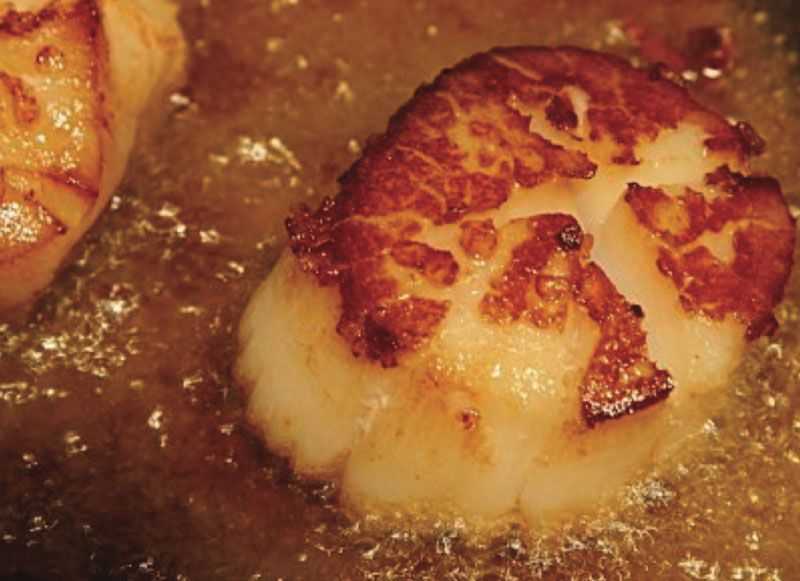North Atlantic sea scallops can be fished commercially by trawling or dredging year- round, but the gold standard on many menus these days is “diver scallops,” handpicked by deep divers or bay scallops harvested by scallop fishermen near sea grass in the shallower waters of bays and estuaries. Bay scallops are smaller and generally sweeter than the meatier sea scallop, but then again, the larger sea scallops make great entrees, especially seared and quickly caramelized like a steak.
Growing up on Shelter Island, NY in the 1970’s, we enjoyed bay scallops as an everyday meal. Bay scallops were cheap and plentiful, and so delicious. Kids harvested them with abandon and were fascinated by the eyes. Dads shucked them by the bucket-load. Moms cooked them. Life was simple and you could eat scallops by the bucketful without guilt.
But that was back when we thought the red tide was only a communist advance, not killer algae, and before a convergence of environmental factors drove the scallop population into decline in the 80’s and 90’s. The red tide still haunts us but we’ve made great improvements in the water quality and cautiously we say that bay scallops are back and we can enjoy them, perhaps more moderately, but without guilt.
Local, fresh scallops are a delicacy which commands a fairly high market price because of the hand labor involved. The edible part of the scallop is the abductor muscle that holds the two shells together. Scallops are shucked by hand at sea and the shells are thrown back into the water. The shucked scallops are immediately iced in cheesecloth bags to keep cold and fresh until sold, so you know when you get a local local scallop as opposed to an import from China or Mexico!
The more common scallop to cook and serve is the larger variety. Cooked scallops should be tender and either creamy or meaty depending on where they’re from and the preparation of the dish, so buy them fresh, cold and dry if cooking them. They are delicate, so buy them as close to the source as possible. You’ll want a healthy portion for every guest!
In terms of wine pairings, Giesen Estate Sauvignon Blanc, 2010 – From New Zealand is delicious – crisp with citrus notes.
Recipe: Seared Scallops (serves 4)
Ingredients
- 4 scallops minimum per person
- 2 cloves garlic, chopped (or more to taste)
- 3 Tablespoons unsalted butter
- 1 Tablespoon plus 1 teaspoon olive oil
- Freshly ground black pepper Splash white wine or balsamic vinegar (optional)
Kosher salt
Cooking Instructions:
1. Rinse scallops with cold water, place on paper towels and thoroughly pat dry. Season scallops with salt and pepper to taste.
2. Add 1 tablespoon butter and oil to a 12 to 14-inch sauté pan, preferably stainless steel or cast iron, on high heat. When the butter is melted and the pan is hot, but before it begins to smoke, add a few drops of water–if the drops sizzle, the pan is ready. Immediately place scallops in the pan, leaving room between each–don’t crowd the pan or the scallops will steam, not sear.
3. To prevent cooked scallops from getting tough, sear them quickly–don’t fiddle with them! Don’t flip them, poke them, or even shake them until you see the bottom edge of the scallop turn that dark caramel color that provides the scallop with it’s delicious browned and crunchy crust, about 1 and one-half to 2 minutes tops.
4. Then flip each scallop once and cook for another minute.
5. Remove scallops to a plate to rest. Immediately melt 1 tablespoon of the remaining butter in the pan, the remaining teaspoon of oil and the chopped garlic. Saute until garlic releases fragrance–it should be golden but not brown or it will taste burnt. Add a bit of white wine or balsamic vinegar to deglaze the pan if you like and the remaining butter. Top the scallops with the garlic butter or serve it on the side and that’s it. Seriously, three minutes total is about all it takes to cook a scallop properly–and by that, we mean rare to medium-rare!
[easy-social-share]










